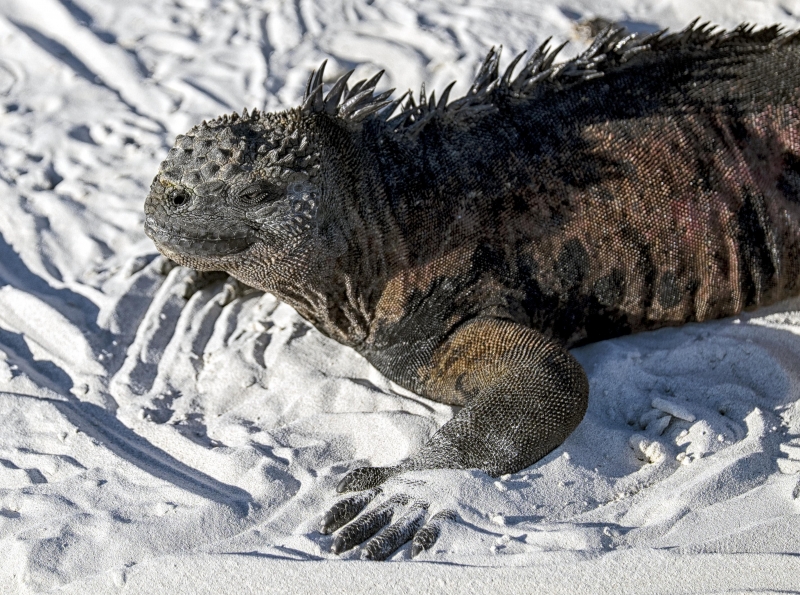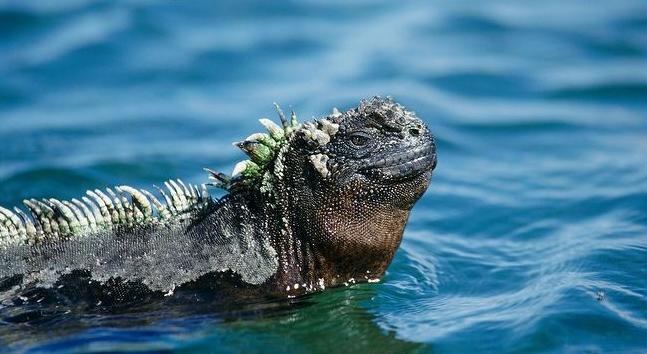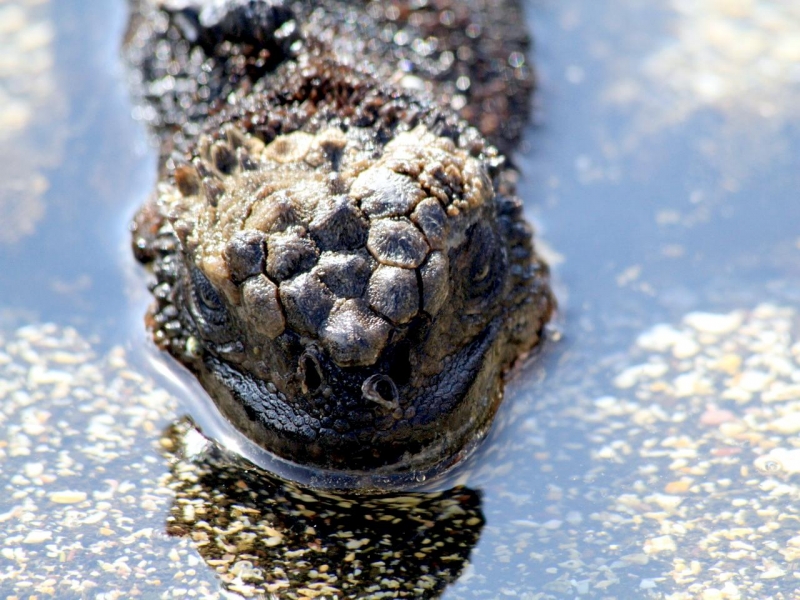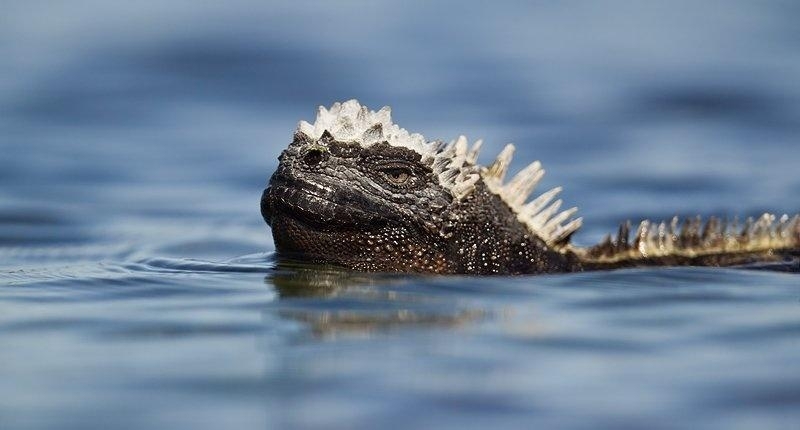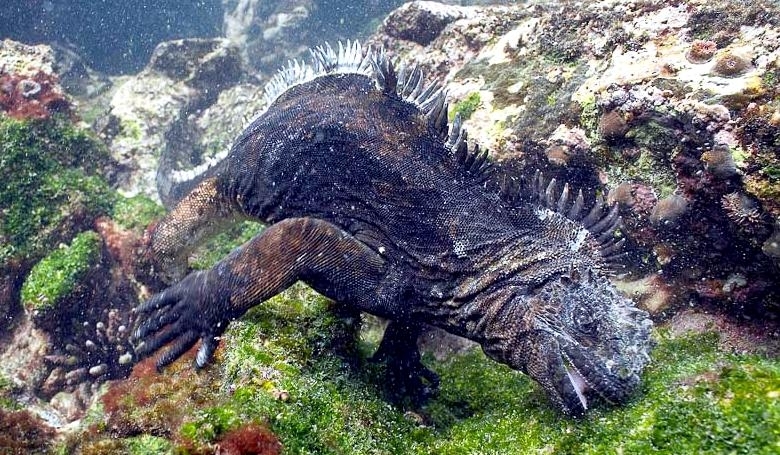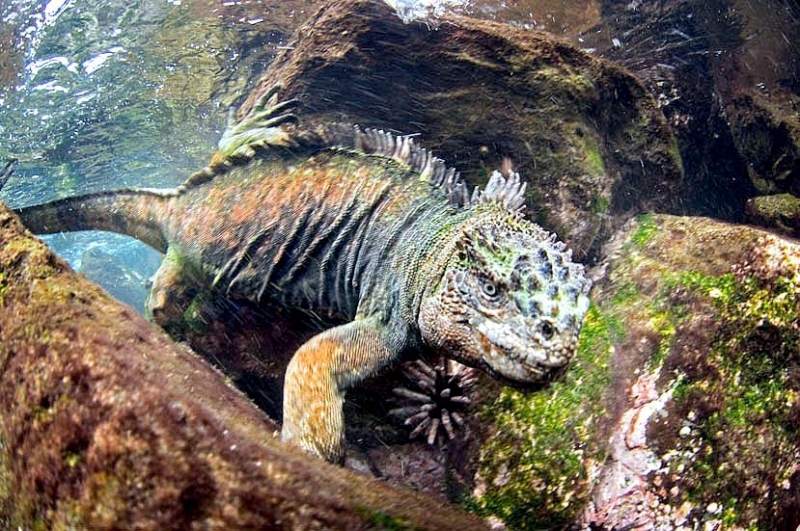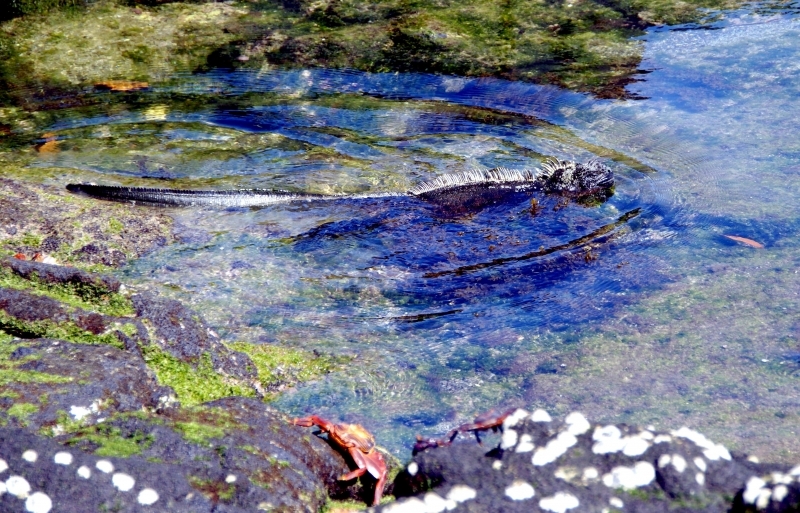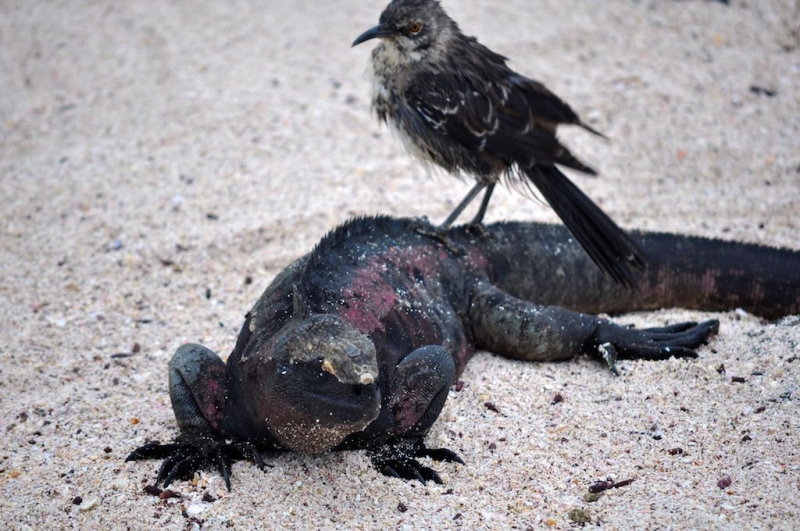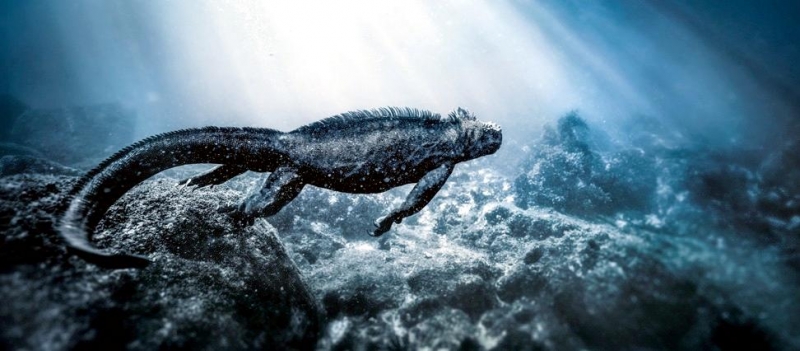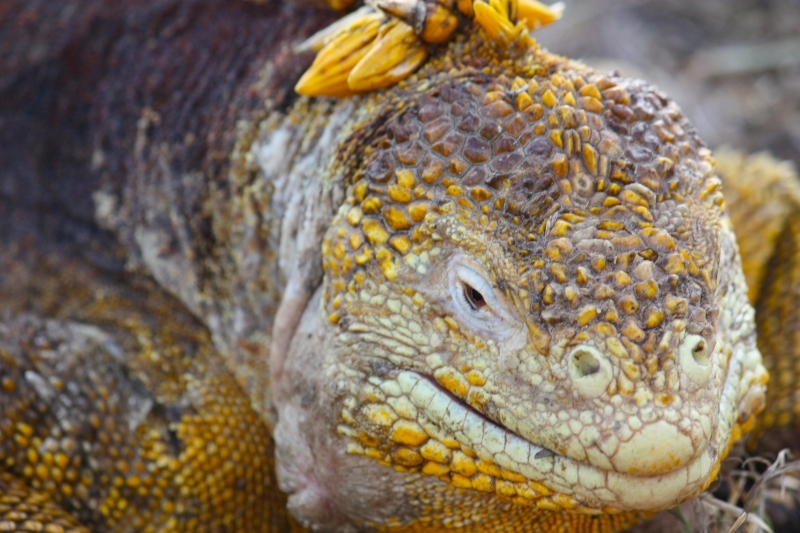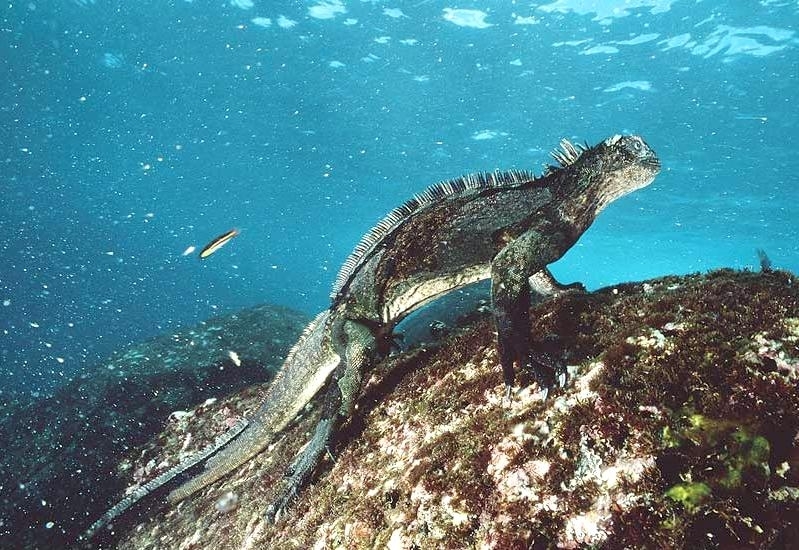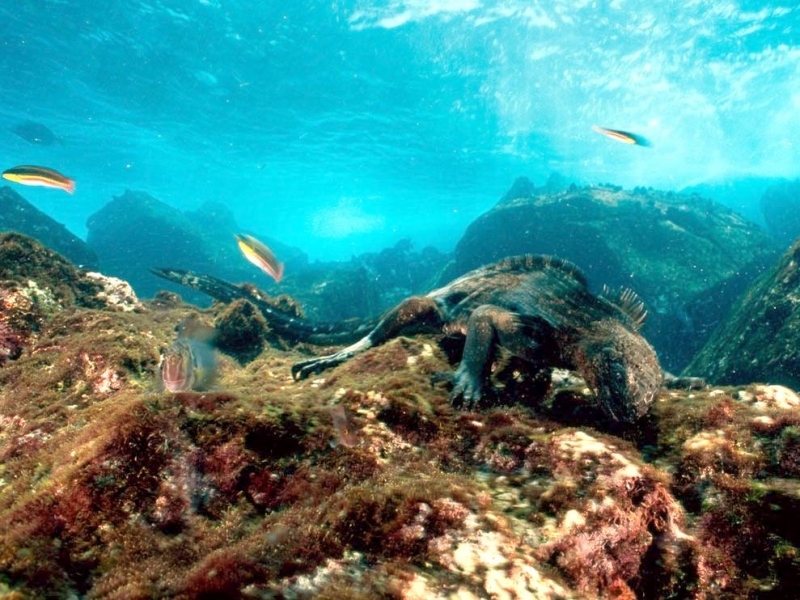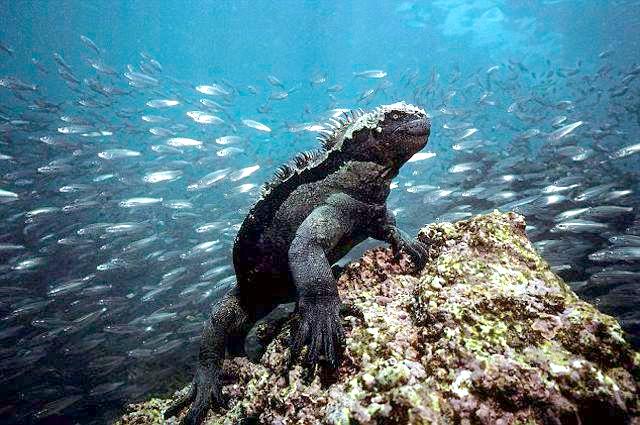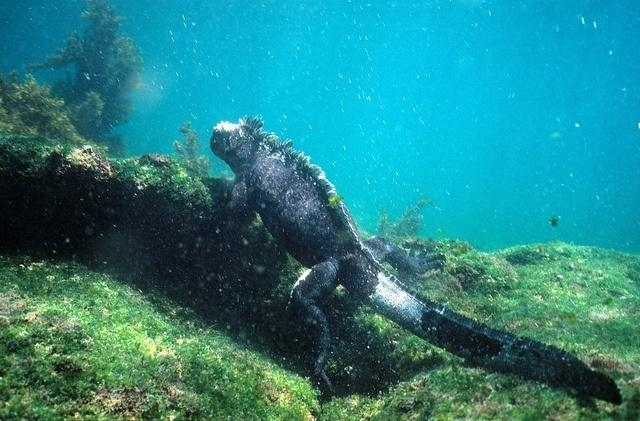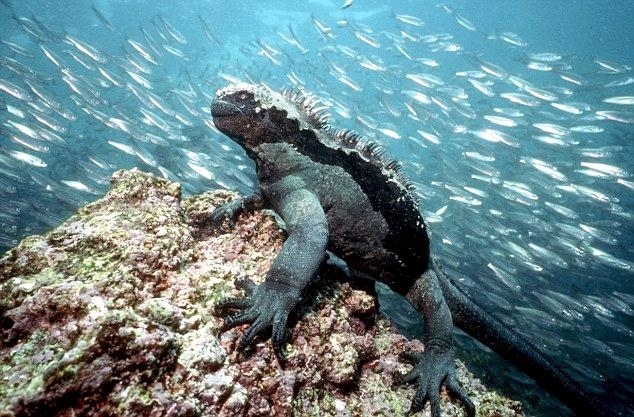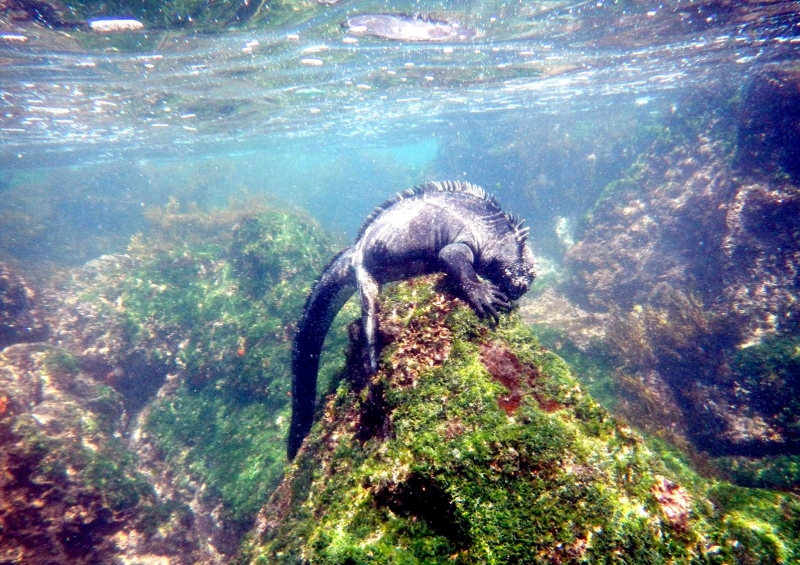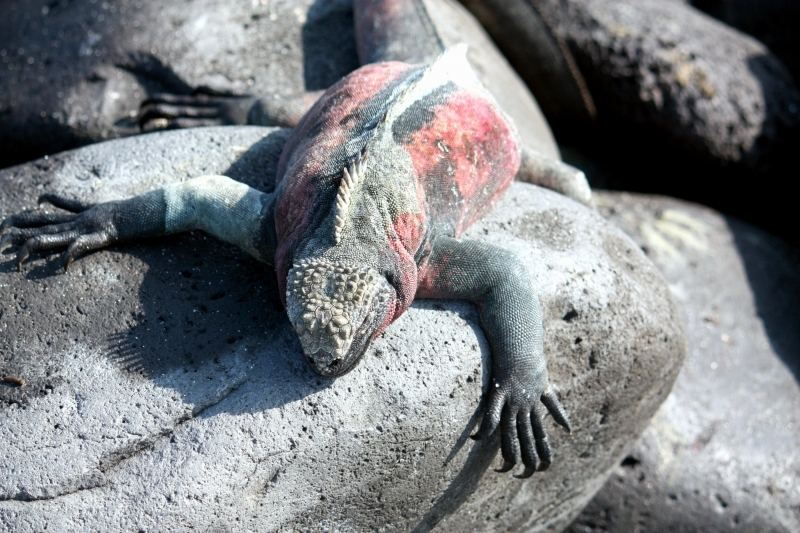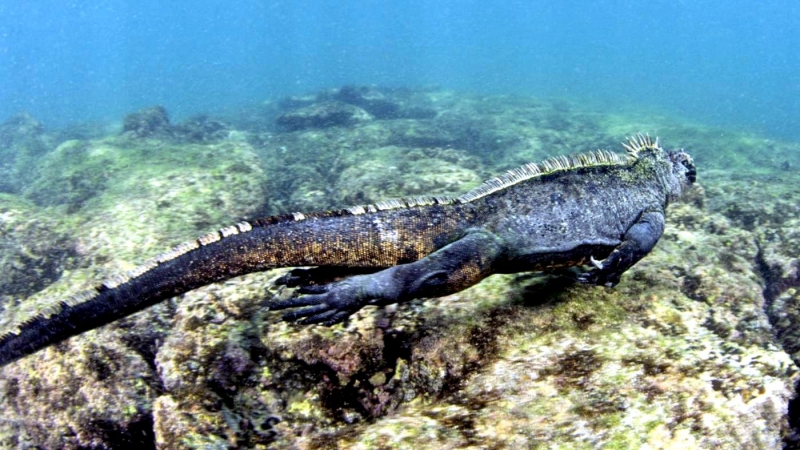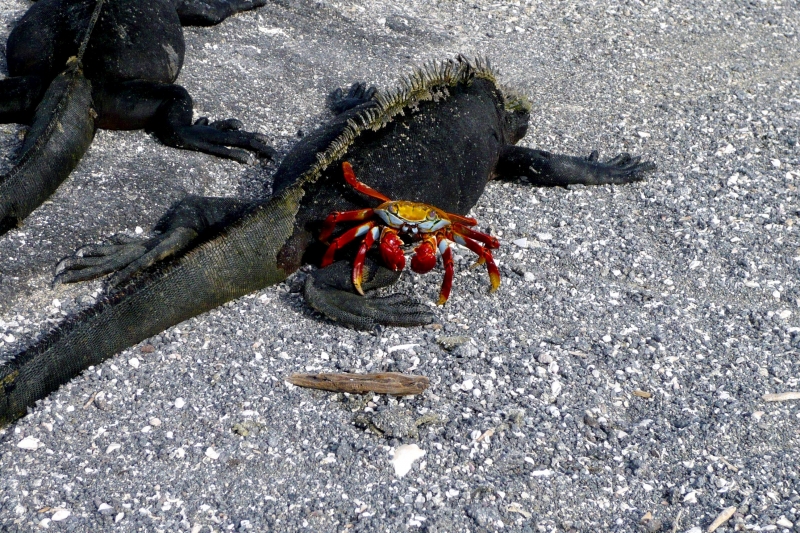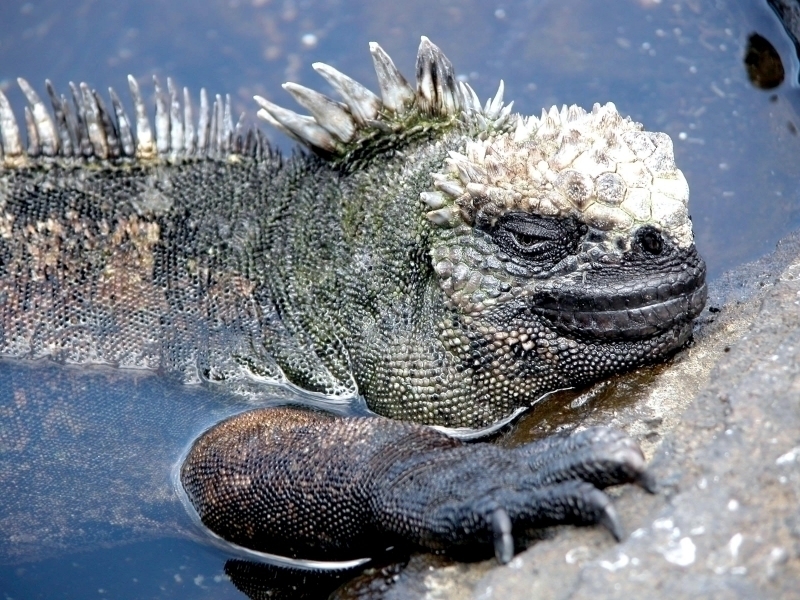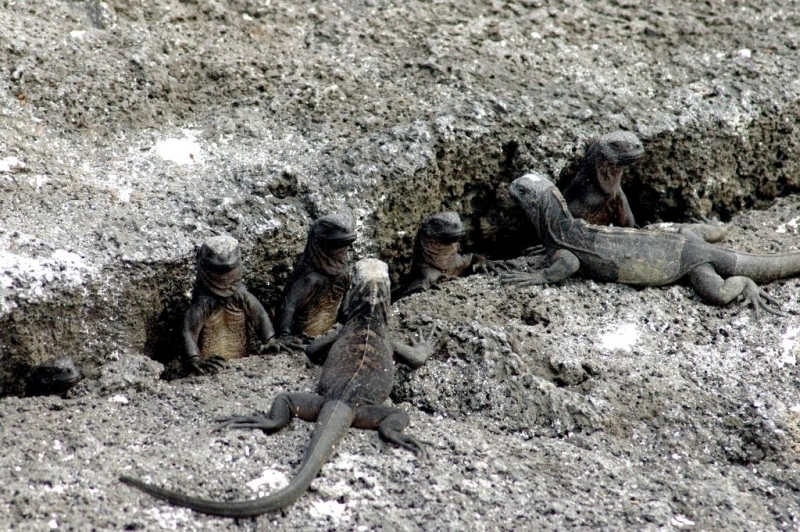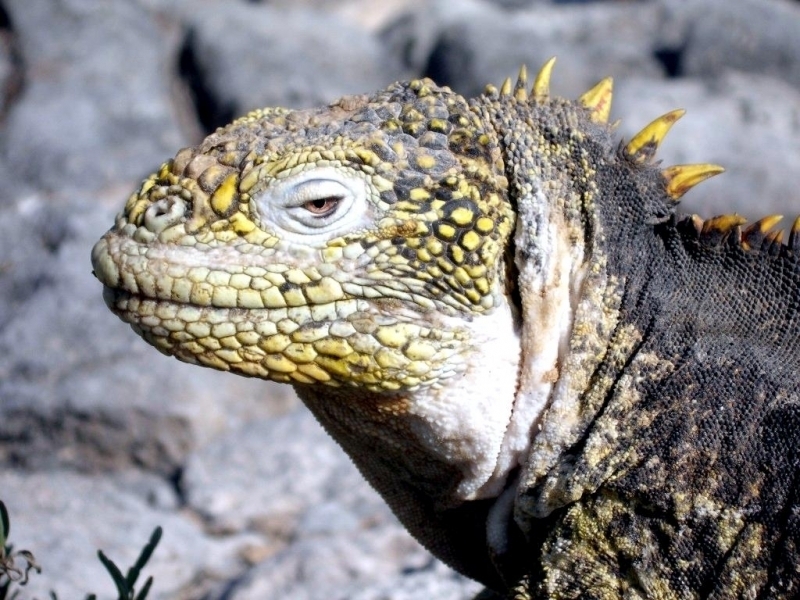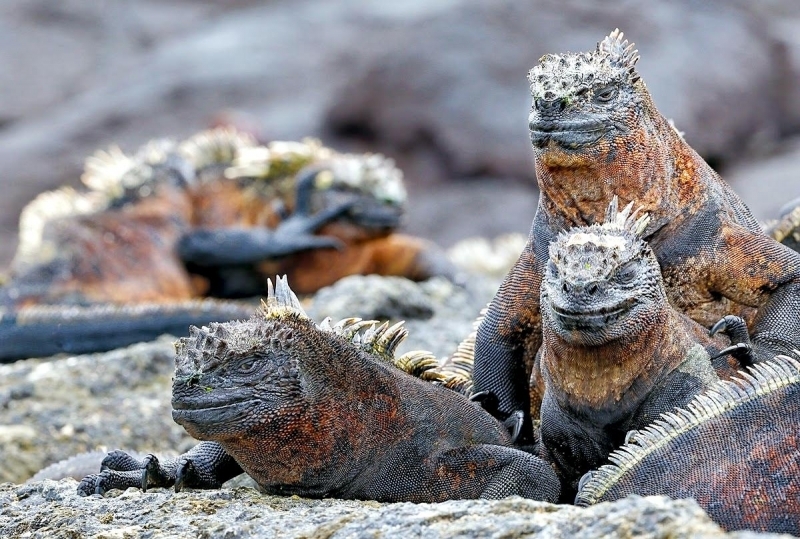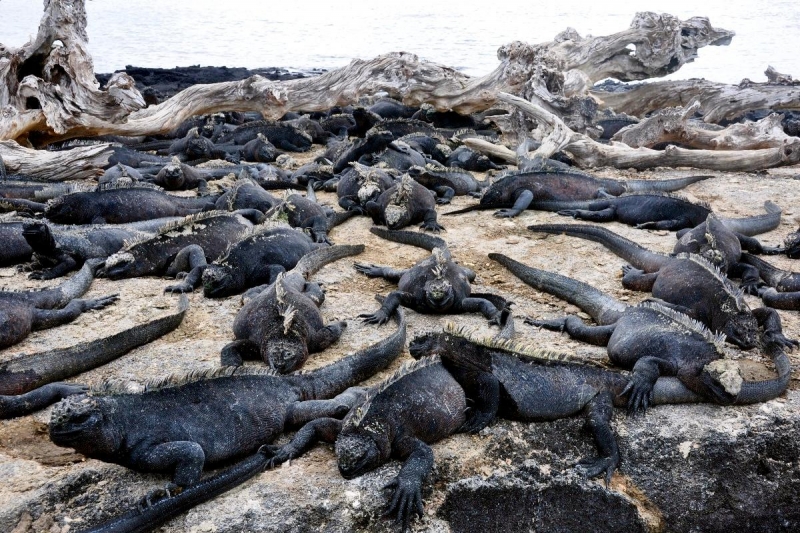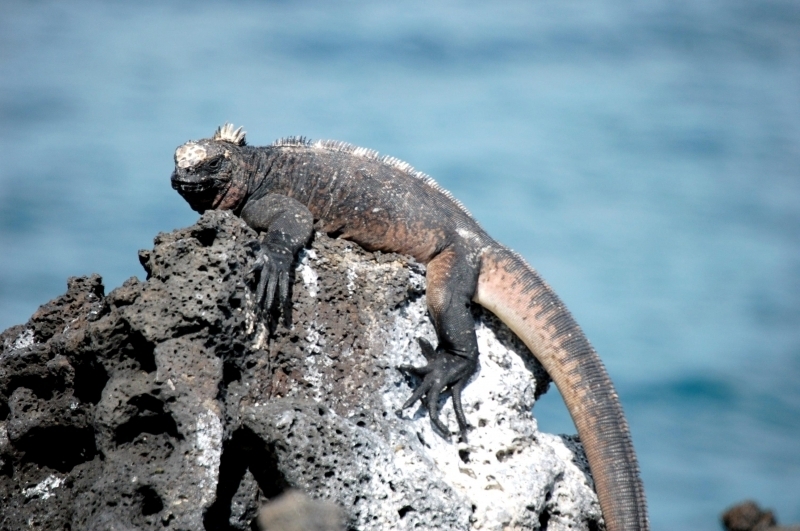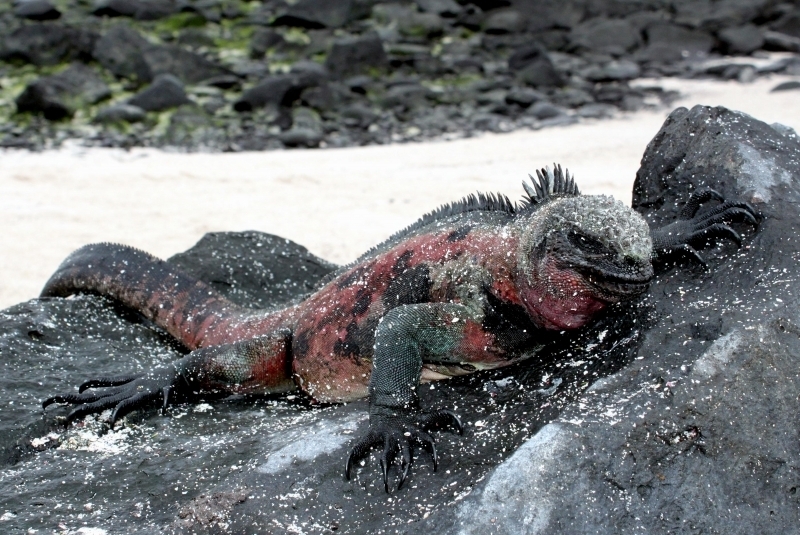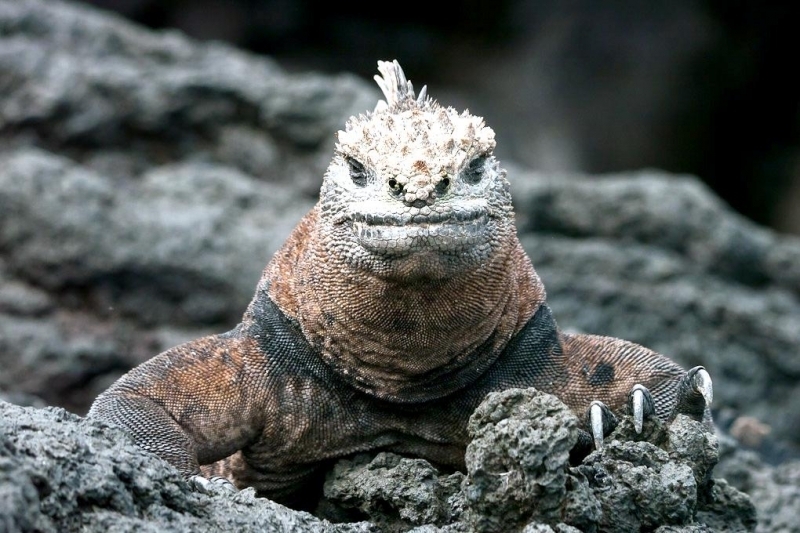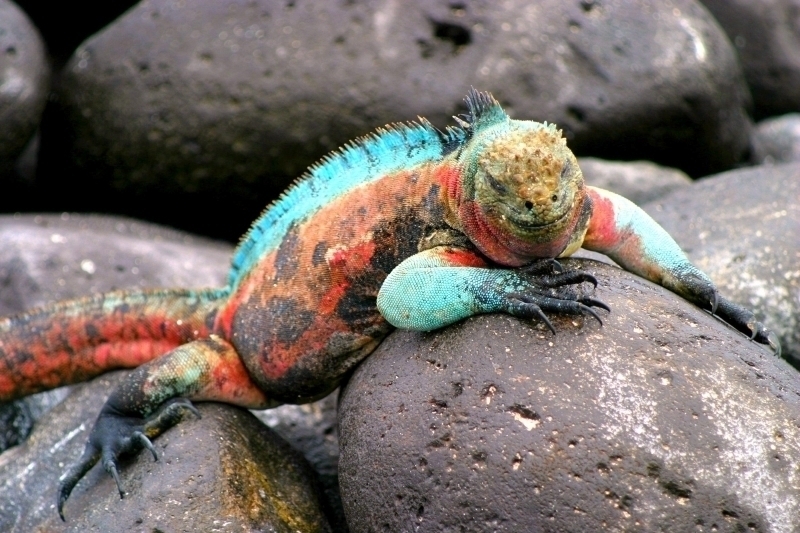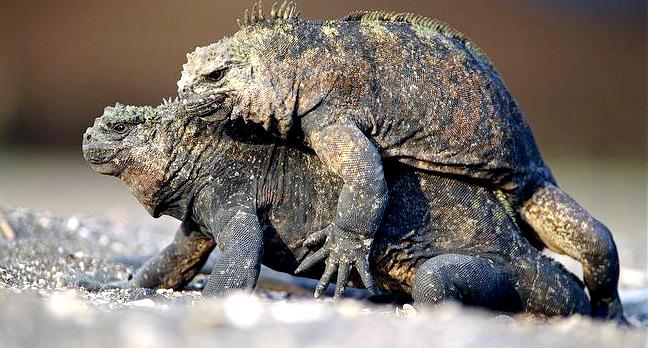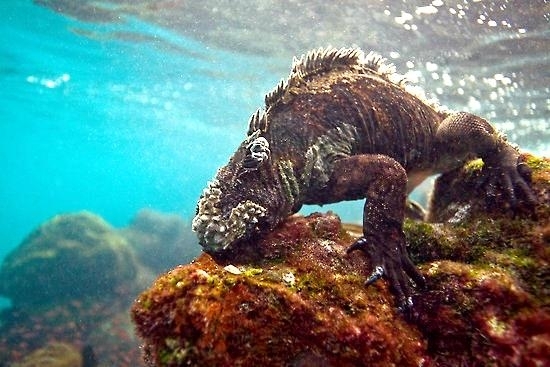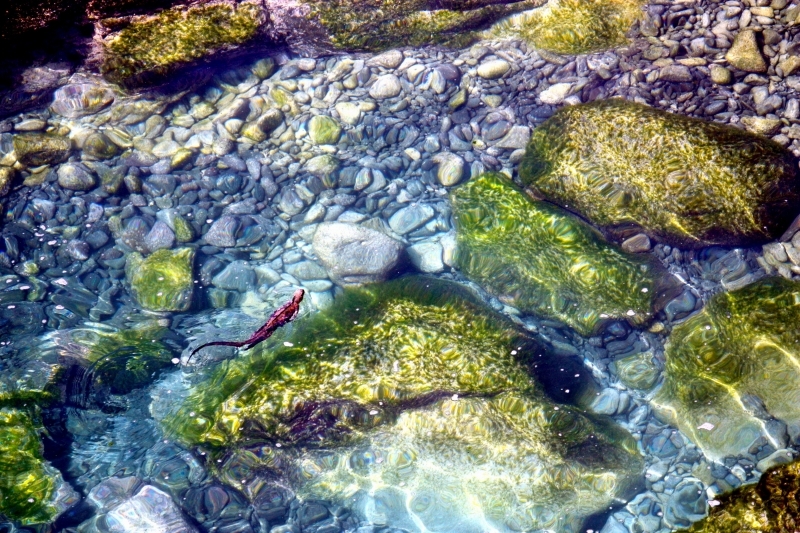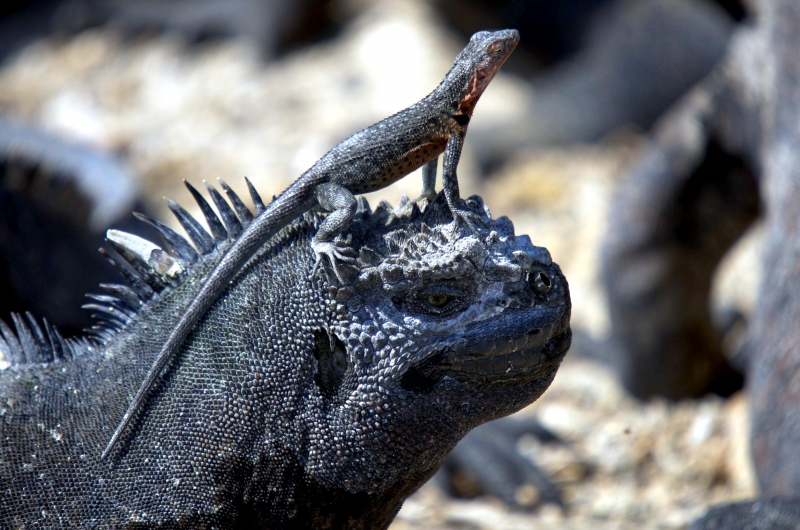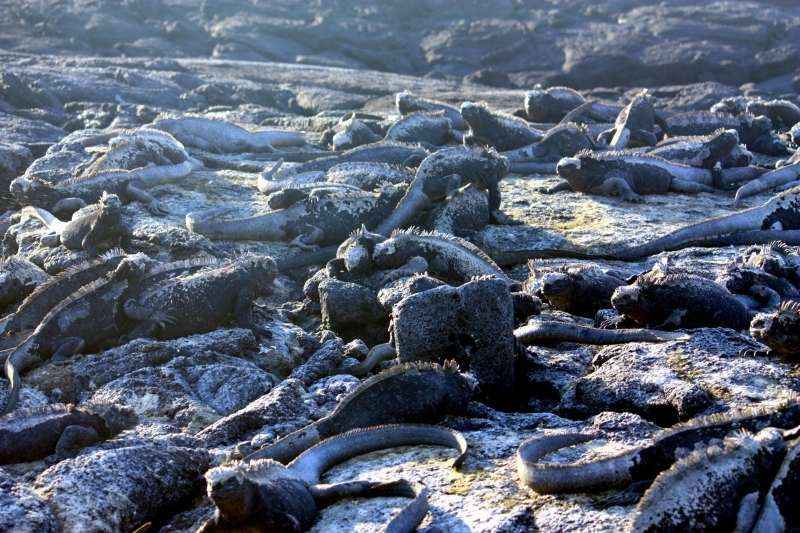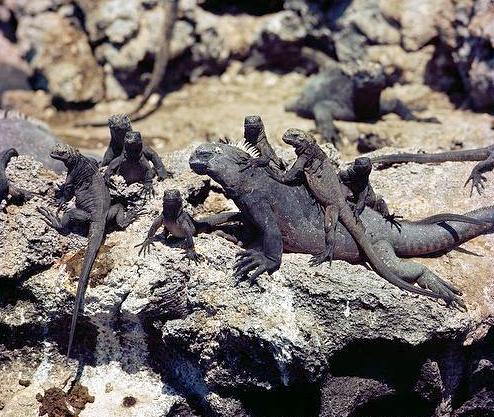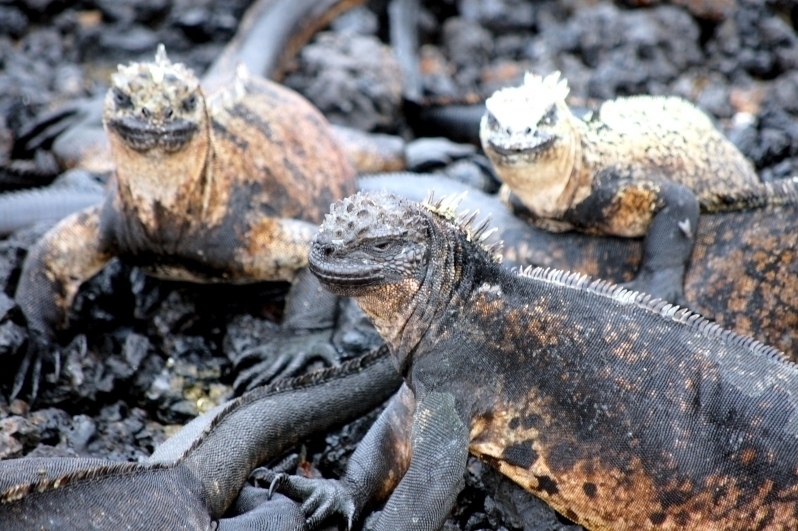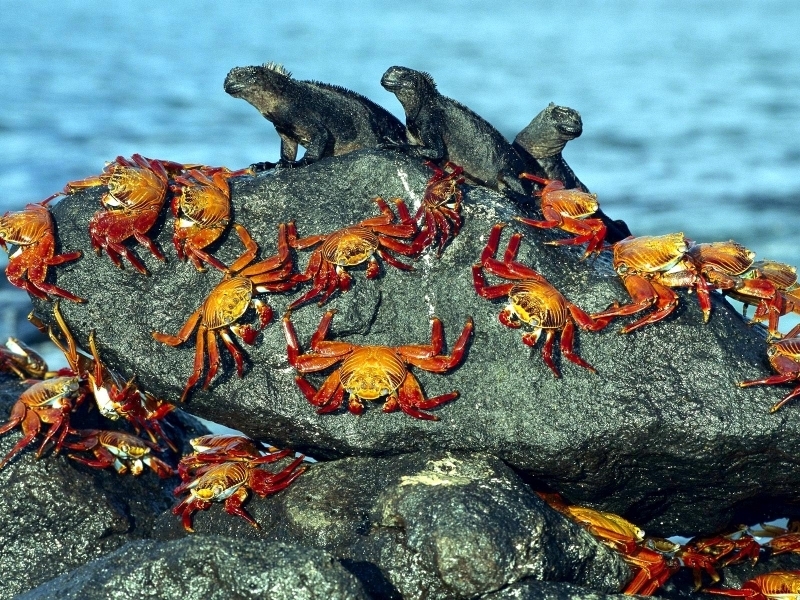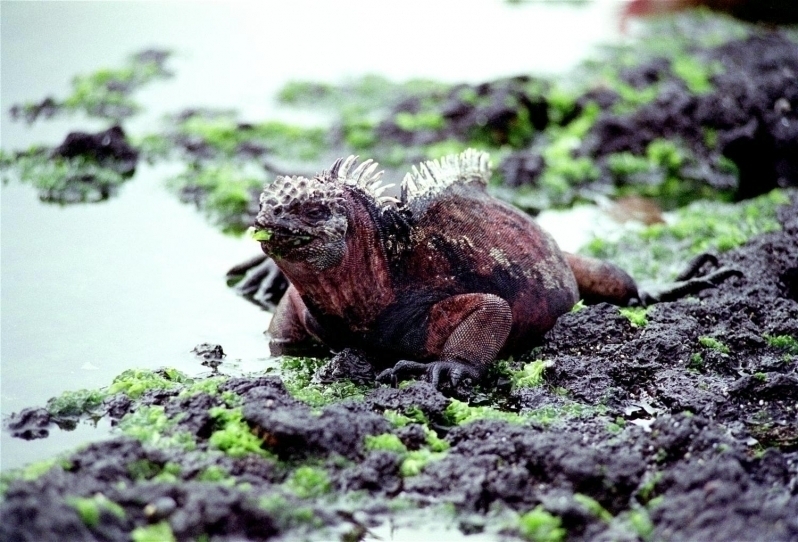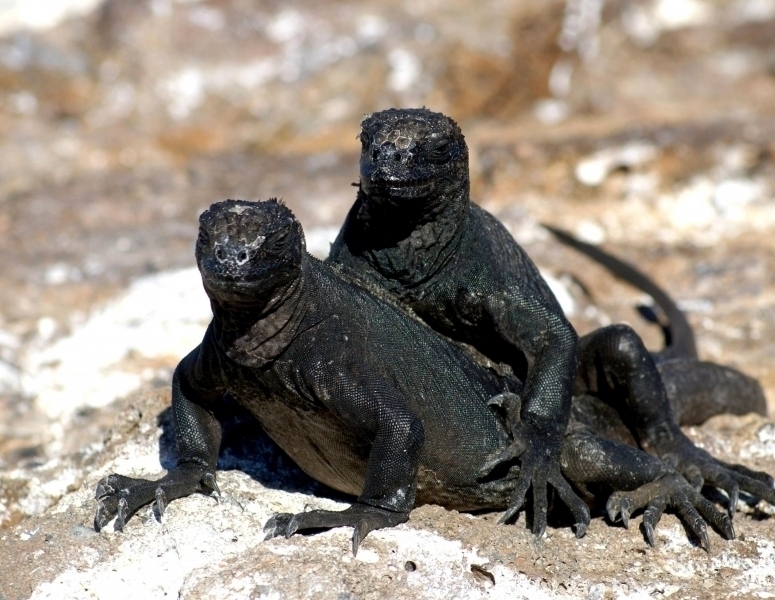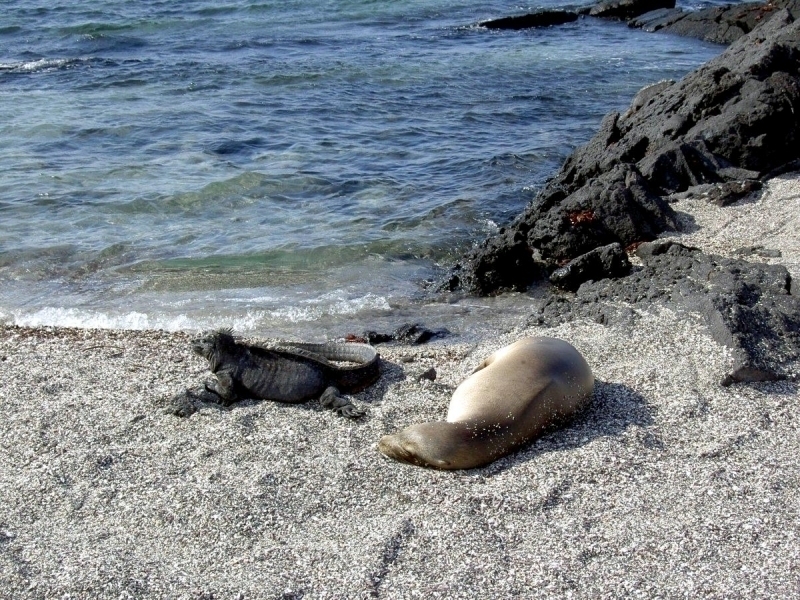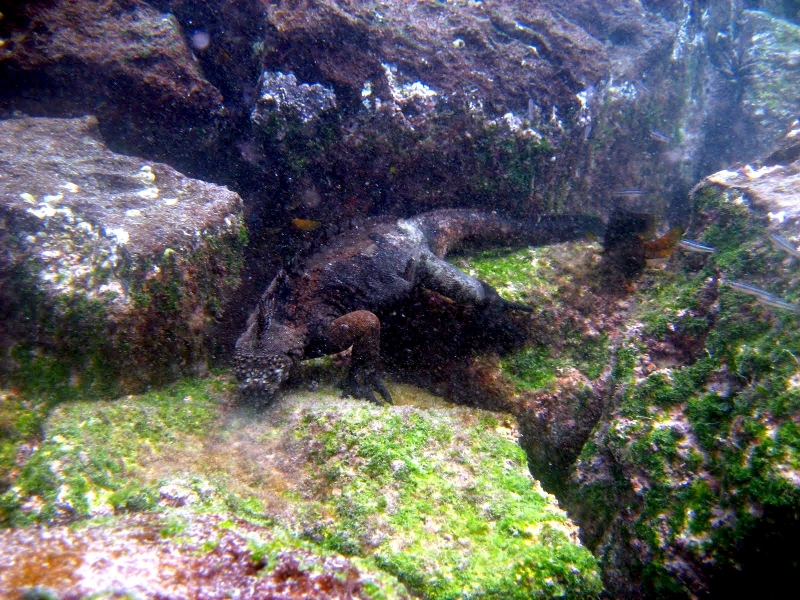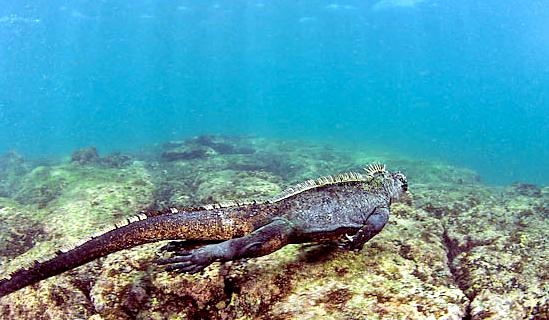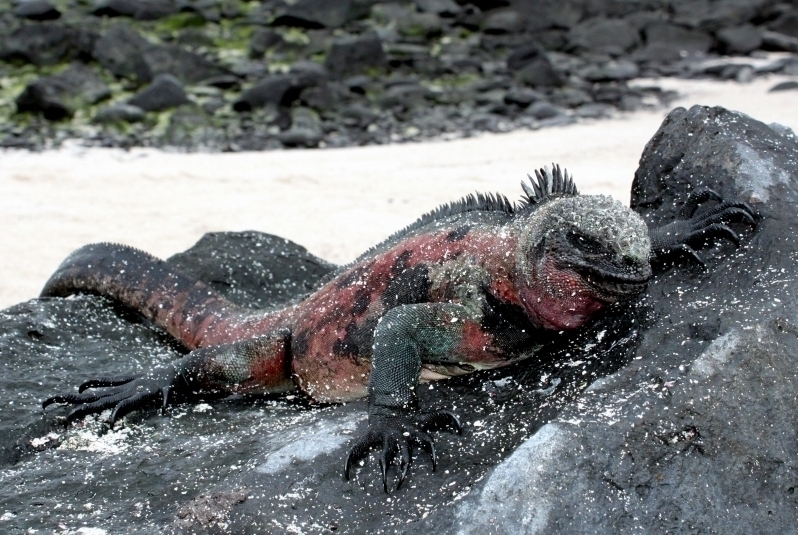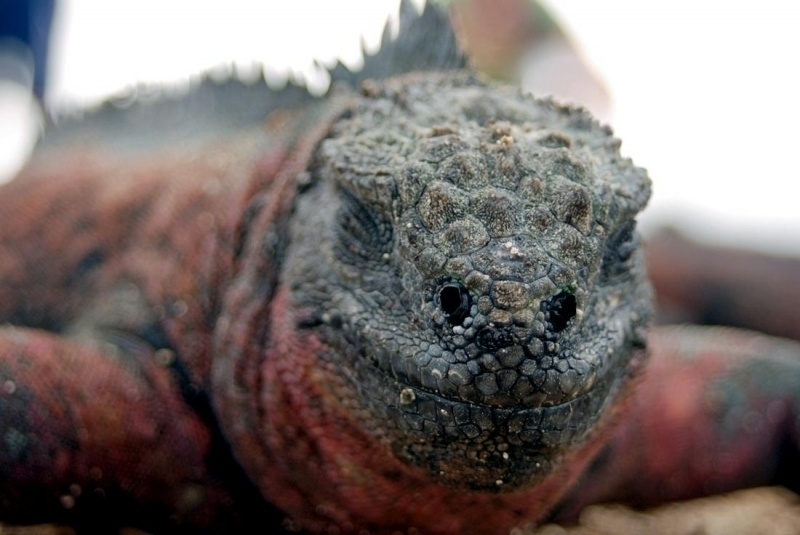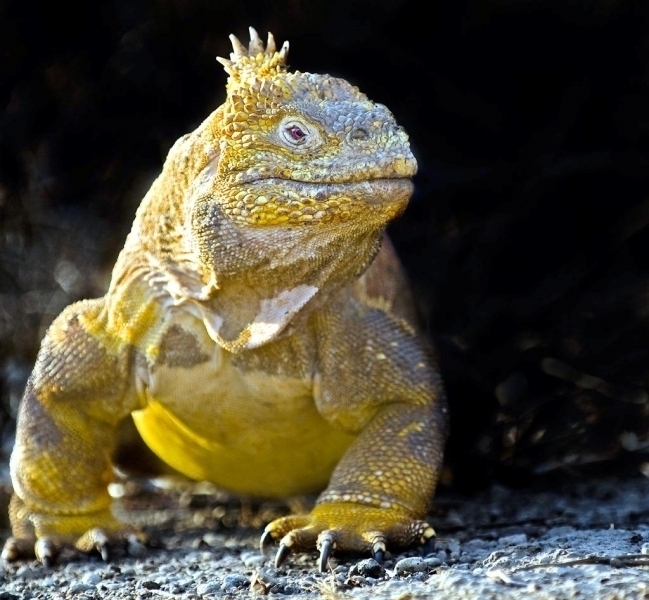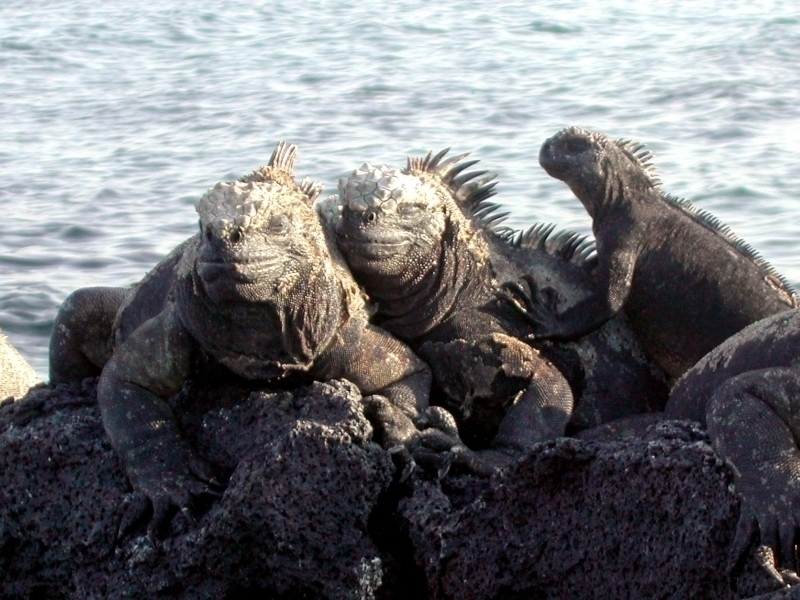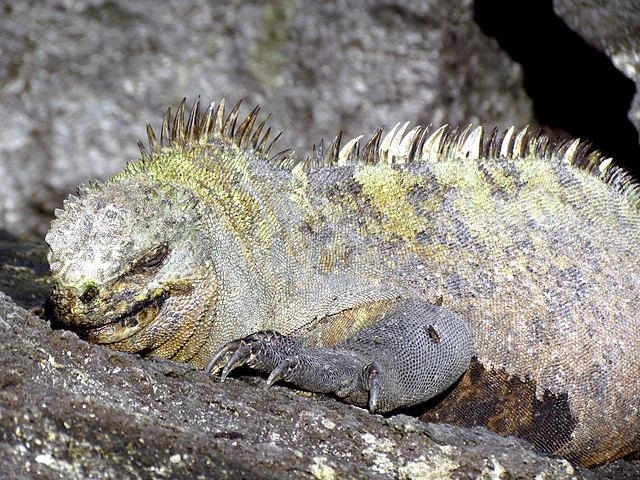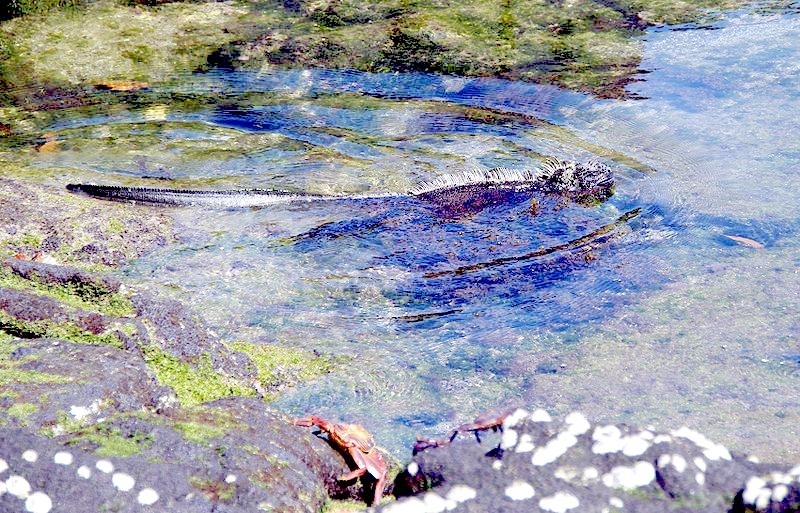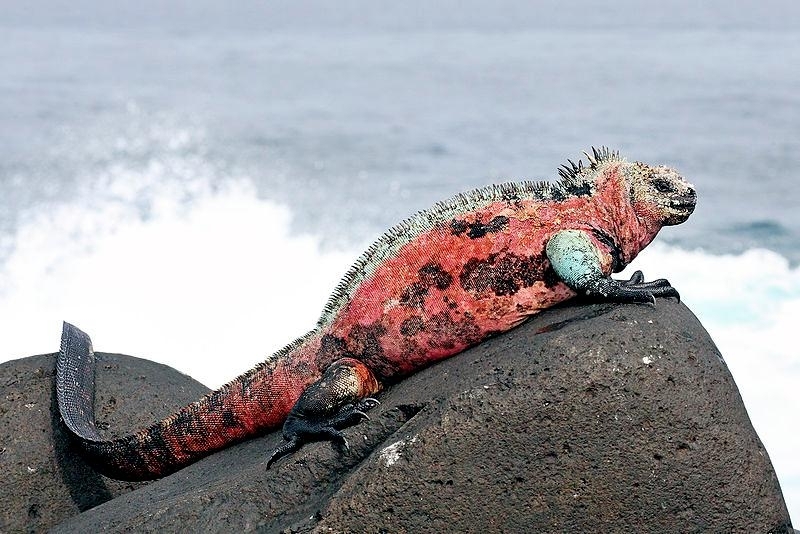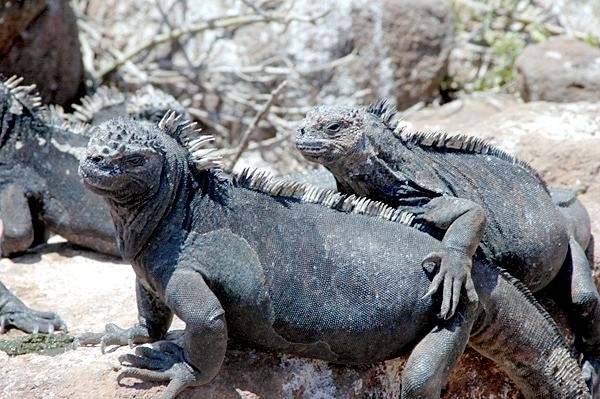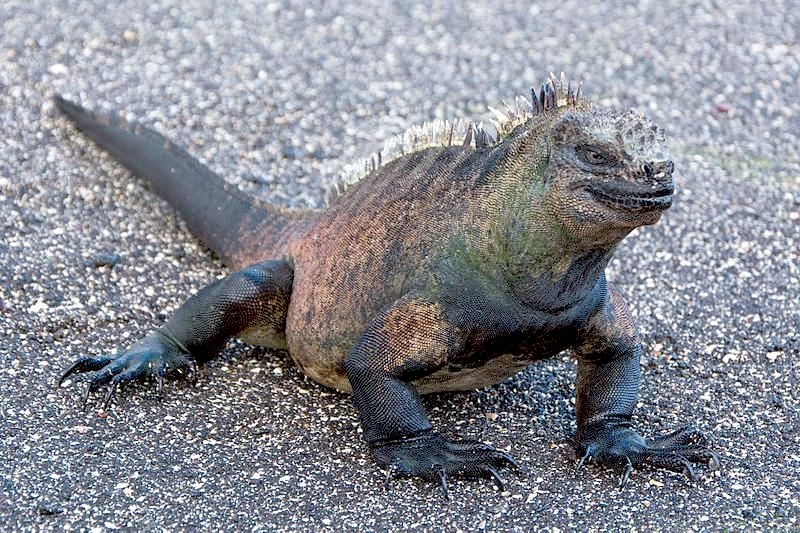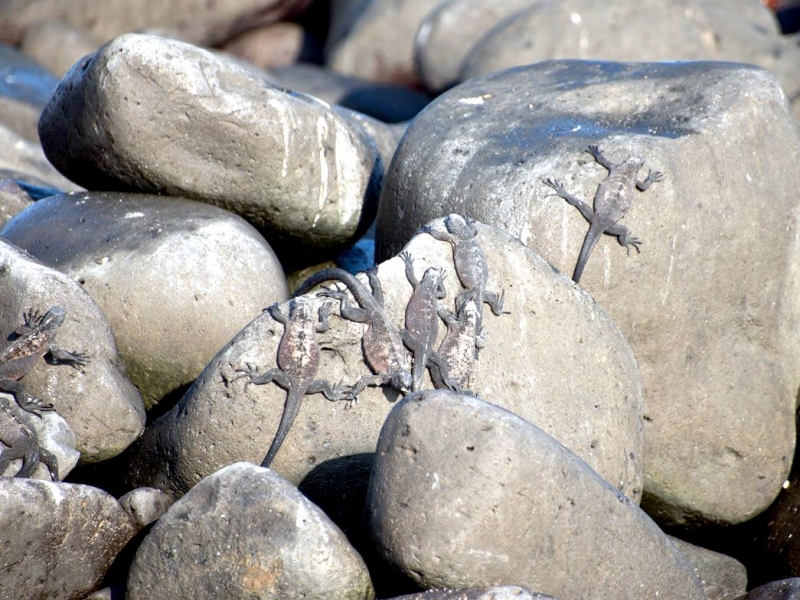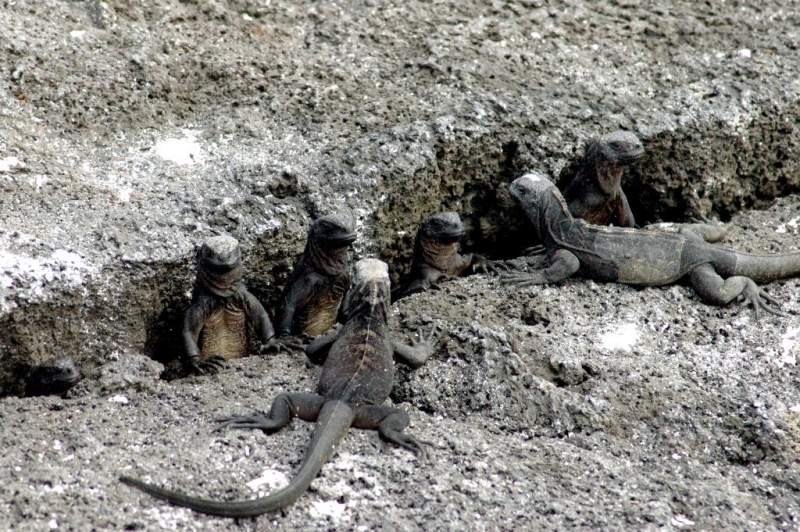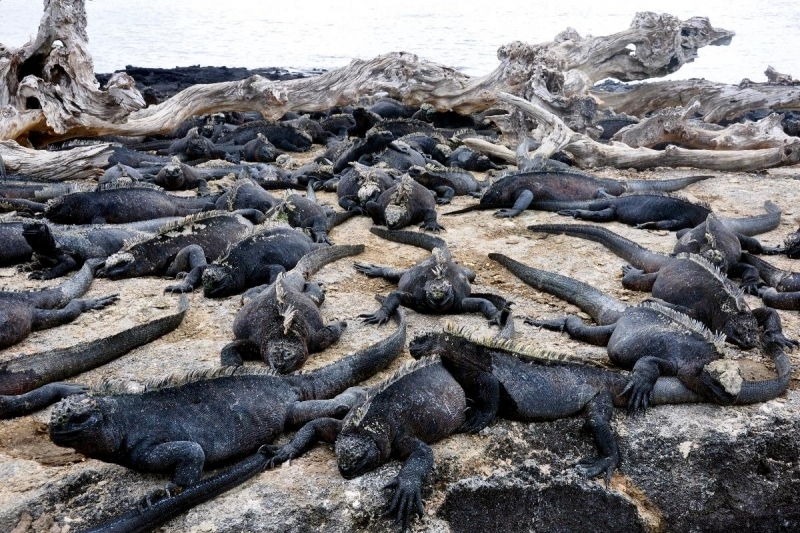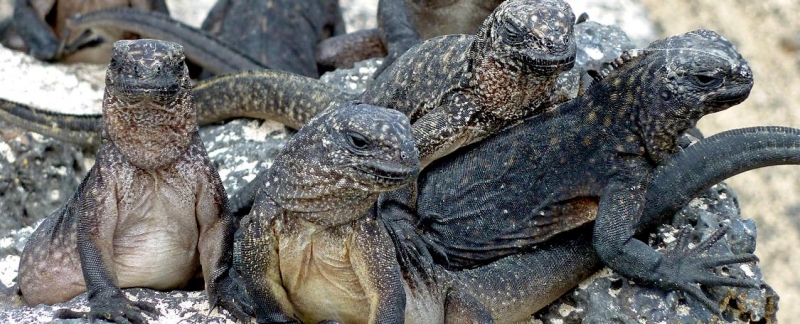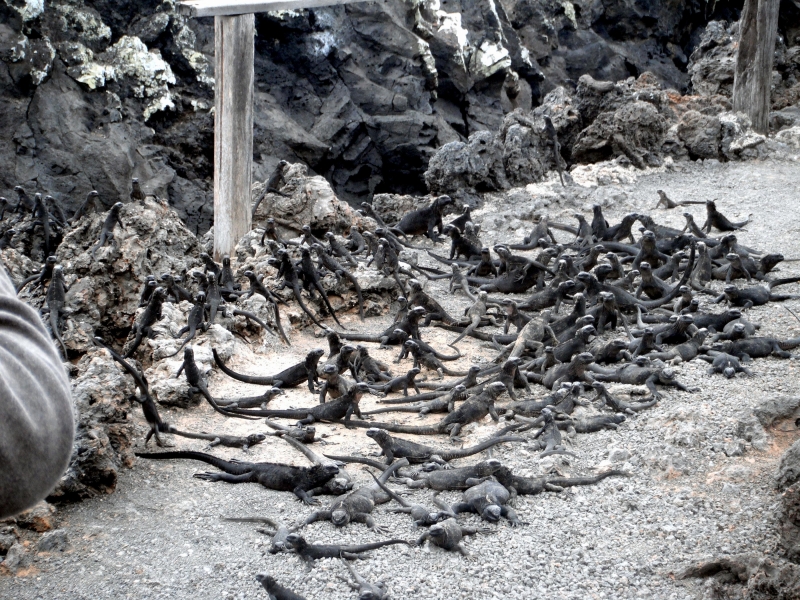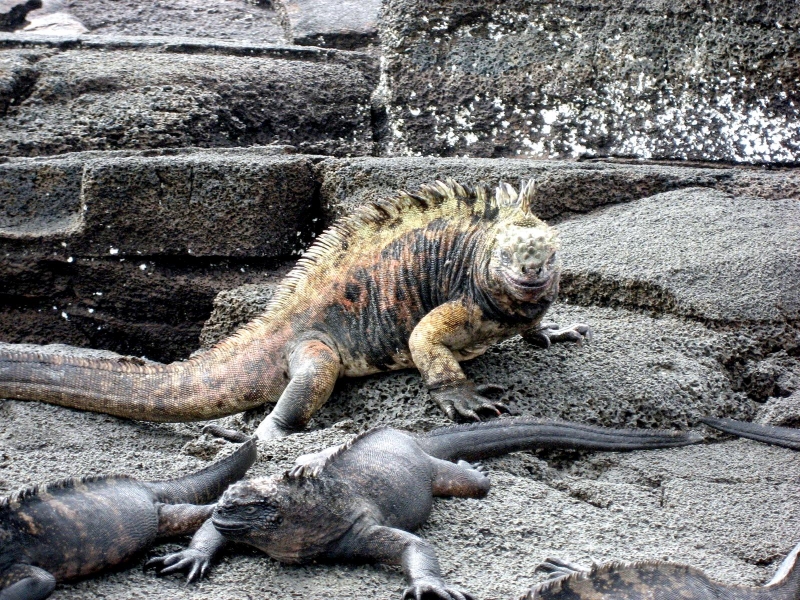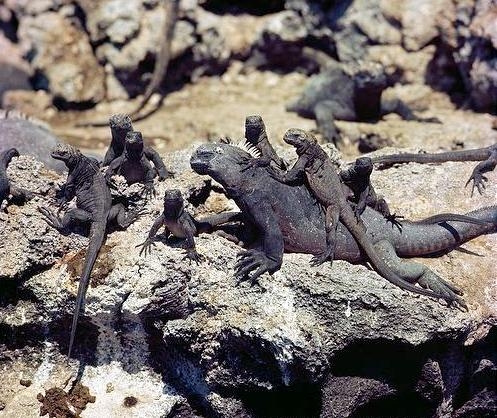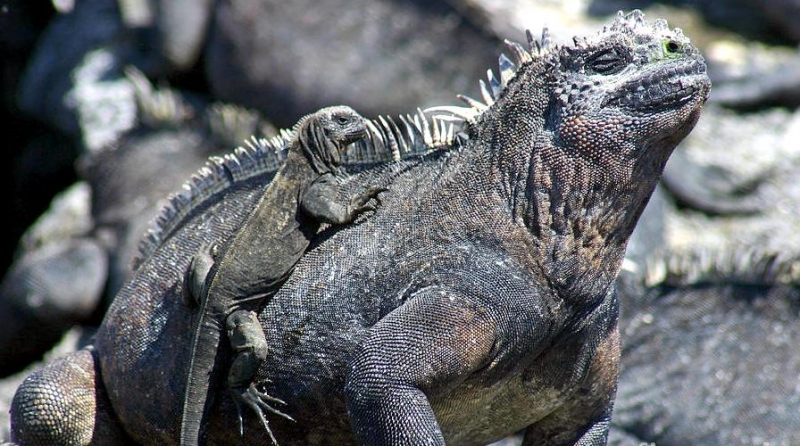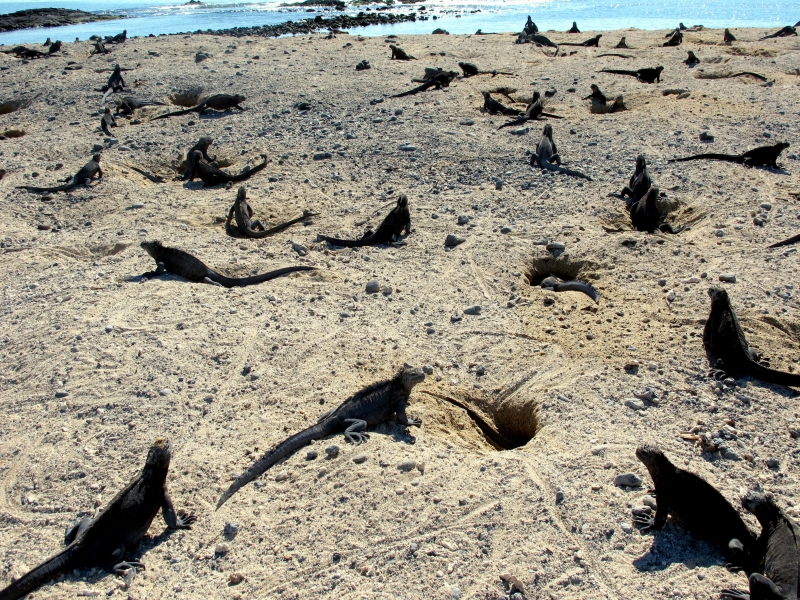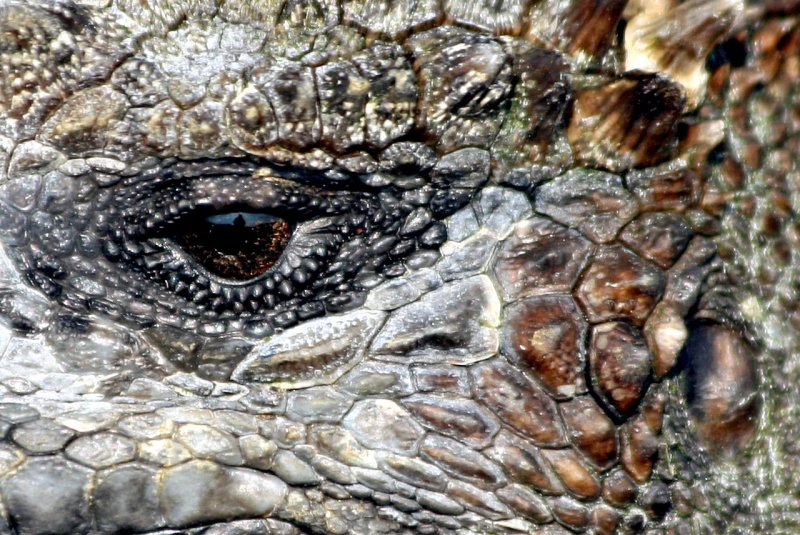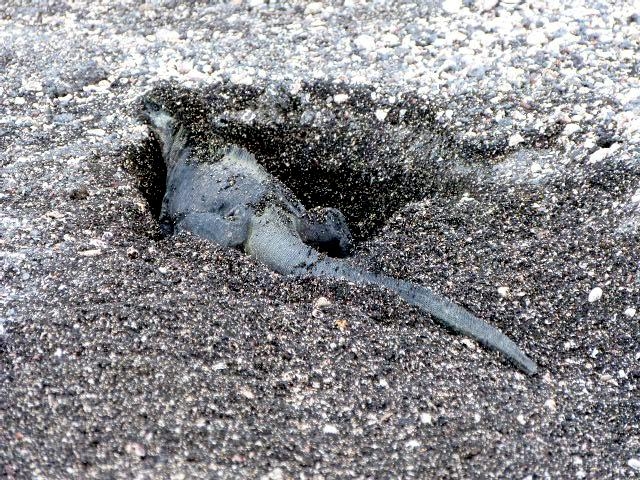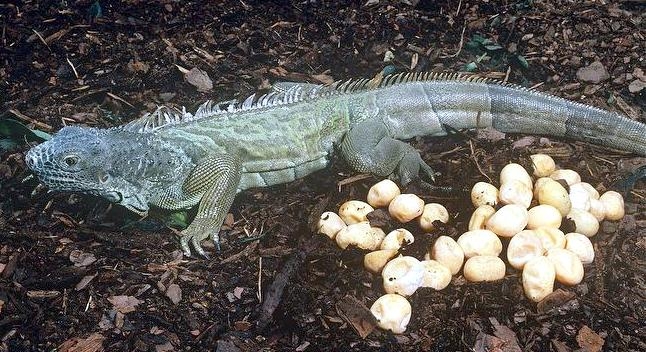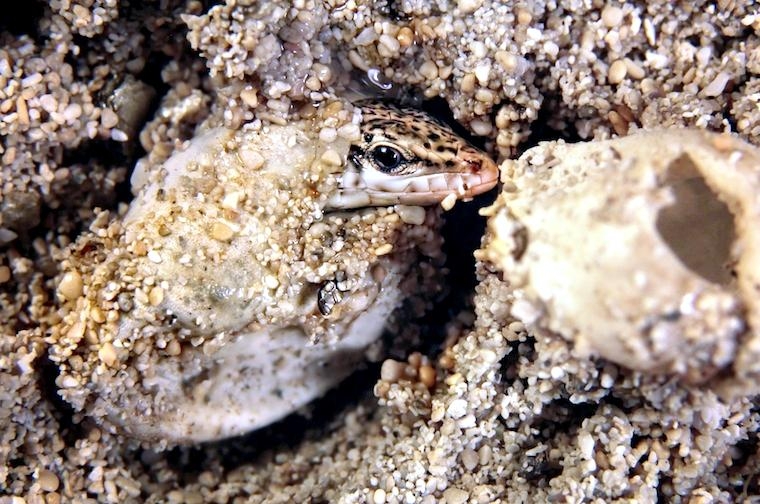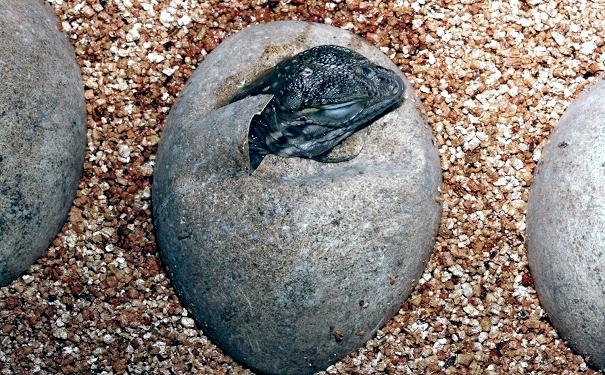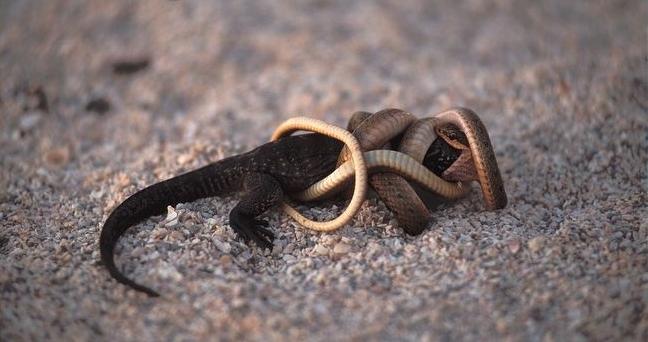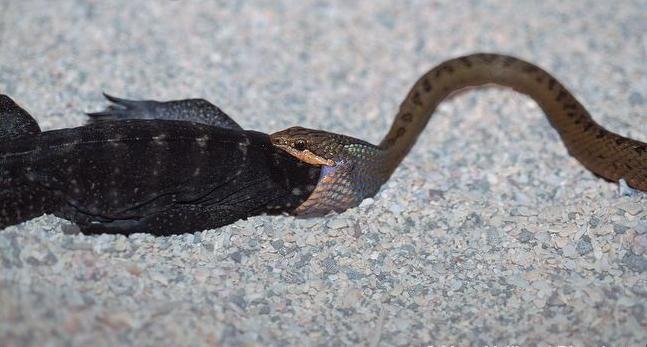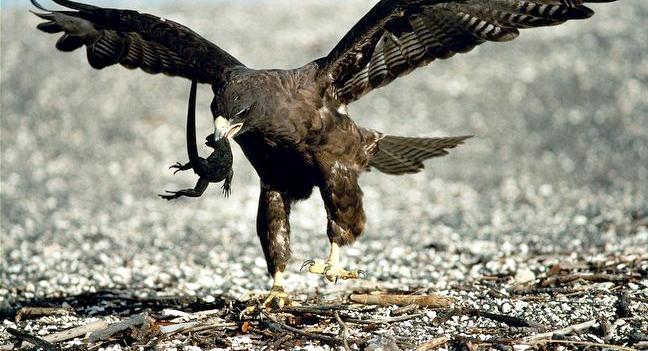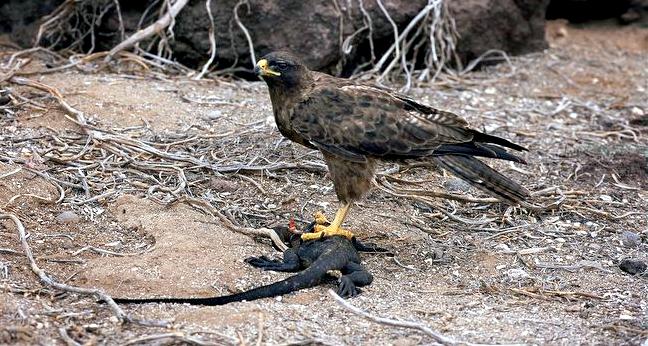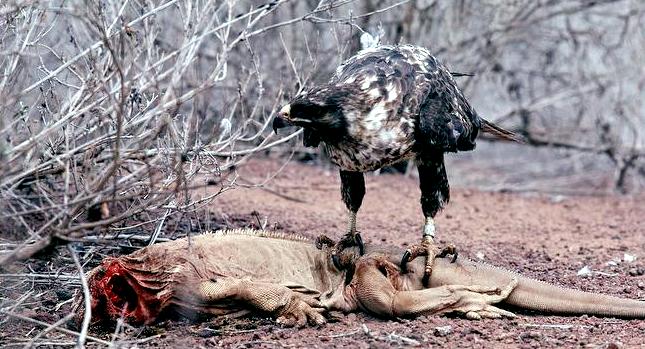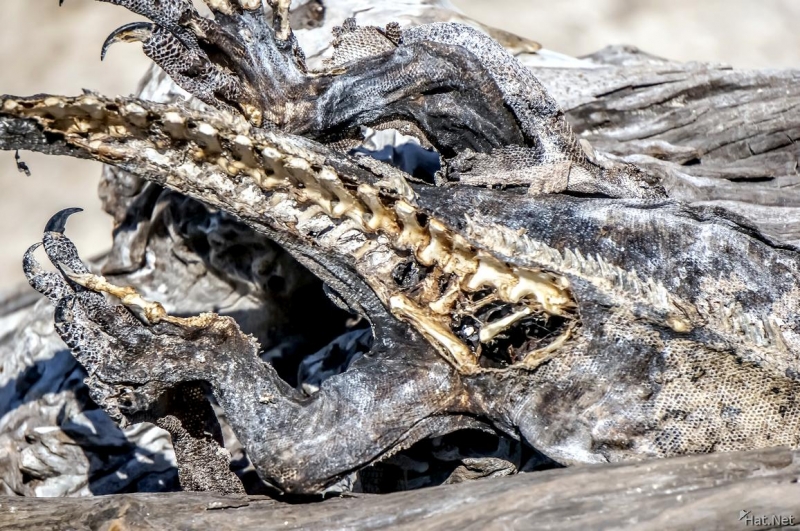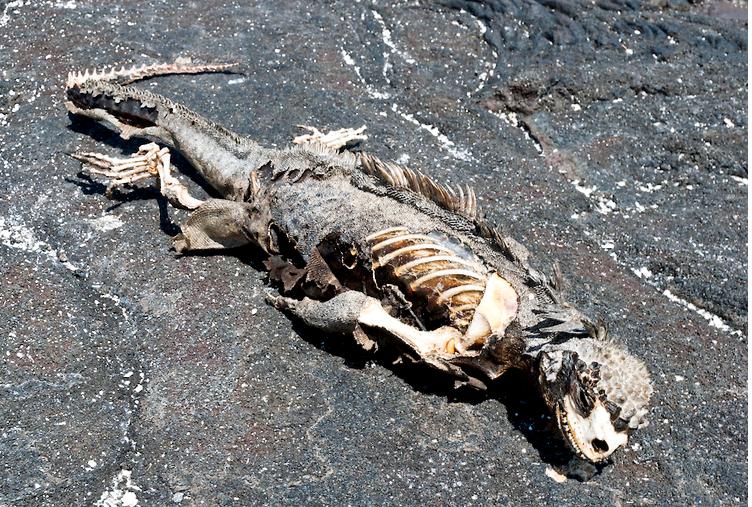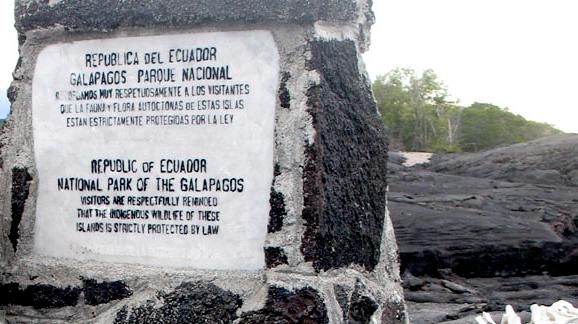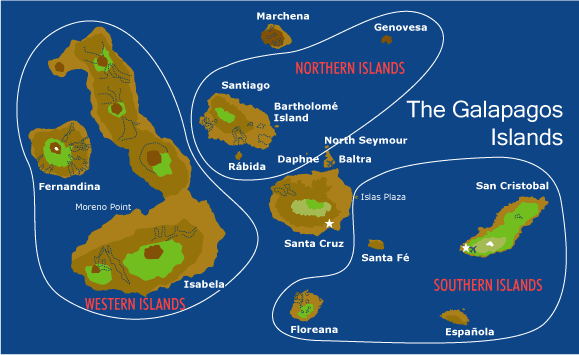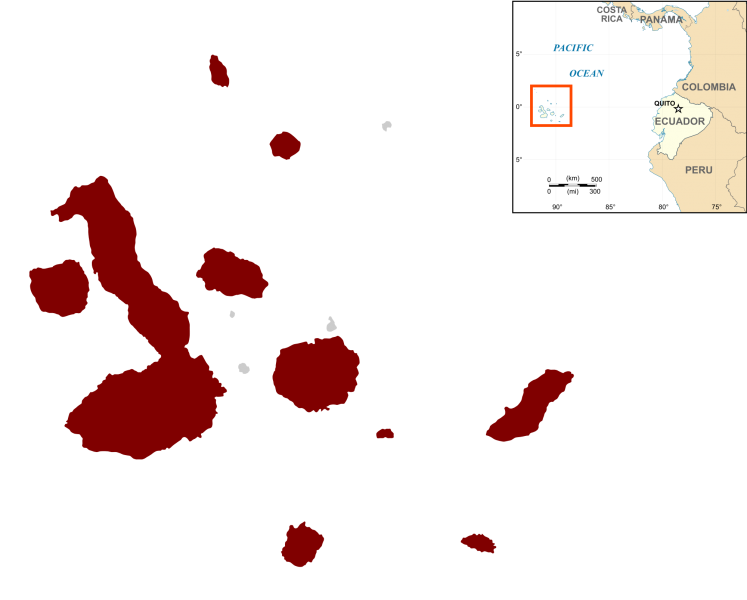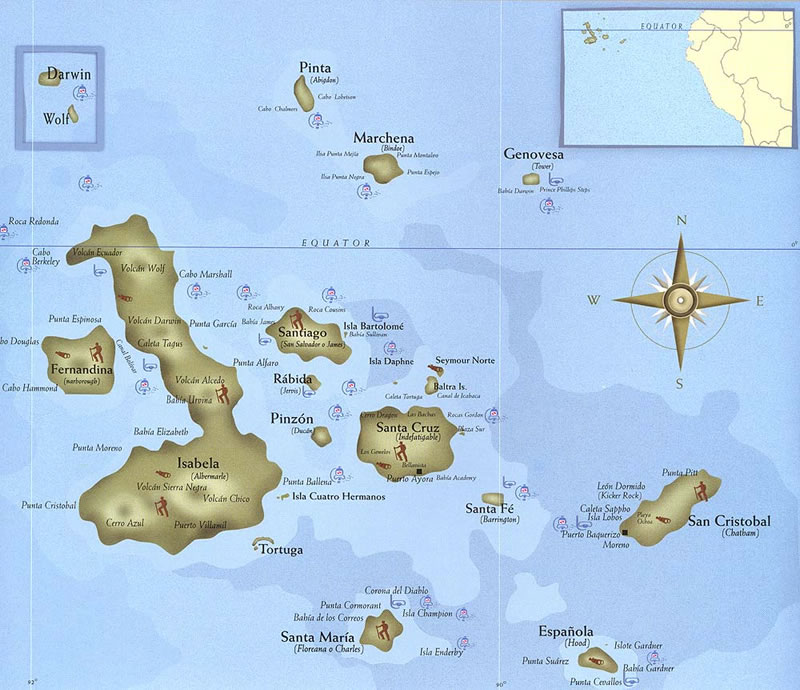“Amblyrhynchus cristatus”
Marine Iguanas are the world’s only sea-going lizards and are gray to black with pyramid-shaped dorsal (upper) scales. The word Iguana is derived from a Spanish form of the Taino name for the species iwana. In some Spanish speaking countries, males of the species are referred to as gorrobo or ministro and juveniles are called iguanita or gorrobito. They are distinguished from Land Iguanas by their short, blunt snouts and slightly laterally compressed tail which efficiently moves this lizard along the surface or beneath the water. Juveniles have a light stripe along the dorsal side. The long, sharp, re-curved claws permit the Marine Iguana to hold fast to the lava in heavy seas or when submerged. The average length of an adult male is approximately 1.3 meters and an adult female is approximately 0.6 meters in length. The weight of these Iguanas range between 0.5-1.5 kilograms. Like many lizard species, Marine Iguanas are often found basking in the sun. This species must warm its body after swimming in cold ocean waters in search of food because reptiles do not have the ability to thermoregulate. Their dark color allows them to absorb heat quickly. When their body temperature is low, these animals move more sluggishly and are therefore at greater risk of predators. To counter this vulnerability, the Marine Iguana displays a highly aggressive behavior to bluff its way to escape. The Marine Iguana is dependent on its marine environment and is consequently equipped with a nasal gland to excrete excess salt which sounds like a human sneeze. Marine Iguanas are only found in the Galápagos Islands archipelago off the western coast of South America. Because the Galápagos have never been part of a continent, it is believed that the Marine Iguana was brought to the islands from South America. It is also thought that Land & Marine Iguanas diverged from a common ancestor at least 10 million years ago islands in the archipelago that are now under water.
Marine Iguanas are widely distributed throughout the islands. Although the different populations vary in size & color, they are all considered to be a single species. The smallest are found on Genovesa and some of the largest are on Fernandina & Isabela. Espanola boasts the most differentiated, colorful Iguanas. These Marine Iguanas have blotches of coppery green & red. The red pigment comes from a particular seaweed that blooms during the summer months, which also coincides with the Marine Iguana’s mating season. The Marine Iguana enjoys a habitat with few predators. Known predators are hawks, owls, snakes, crabs, rats, feral dogs & cats. Both adult Iguanas and their eggs are preyed upon. Females are especially at risk of predation during breeding season in the open nesting areas. Before feeding, a Marine Iguana must raise its body temperatures to approximately 36 °C. They are ectotherms and can lose up to 10 °C when in the ocean. To regulate their body temperature, they must bask in the sun for long periods of time.
Marine Iguanas are herbivores that feed primarily on marine algae. Large adults feed frequently, often diving during high tide. Dives are typically shallow, 1.5-5 meters, but large adults dive to depths of 15 meters or more. Dive times are usually only a few minutes long, but there are records of Marine Iguanas being submerged for more than half an hour. Juveniles feed in the inter-tidal zone during low tide. In 1982-1983, an El Niño Southern Oscillation event caused high rainfall and increased sea level & surface temperatures resulting in a decrease in biological productivity. Because Marine Iguanas are dependent on marine flora, populations declined during this time, but have since recovered. Breeding season is December-March. Nesting season lasts from January-April. Females reach sexual maturity when 3-5 years old. Males when they are approximately 6-8 years old. Mating territories are defended by males. Females dig burrows in the sand 30-80 centimeters deep and up to 300 meters inland where they lay 1-6 eggs. Females guard the burrow for several days then leave the eggs to incubate for about 89 to 120 days. Hybridization between the Galápagos Land & Marine Iguanas has been documented on Plaza Sur, however this is not a common occurrence. When the infants hatch, a Marine Iguana baby can weigh about 50-60 grams. Upon hatching, the infants tend to look around and then immediately run often bipedal (on 2 legs) to the nearest cover.
